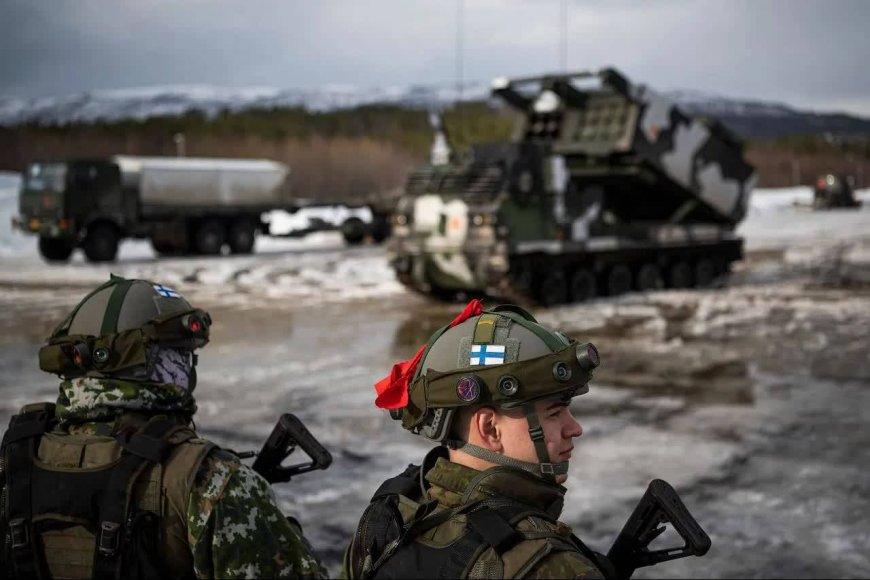Finland's Accession to NATO: Could It Trigger a New War With Russia After 84 Years?
In light of Finland's recent accession to NATO and its subsequent departure from its longstanding policy of neutrality, Helsinki now finds itself confronted with a myriad of challenges that demand profound consideration. Finland's strategic vision has expanded beyond a singular focus on Russia since joining the alliance, as it endeavors to forge alliances and synergies across diverse domains.

Notably, Finland's immediate tactical approach entails prioritizing the Baltic Sea region and fostering extensive collaboration with the Nordic countries to achieve multifaceted objectives. Geographically, Helsinki is closer to St. Petersburg than Stockholm, and Finland's extensive 1,300-kilometer border with Russia leaves no room for doubt regarding potential threats from its Eastern neighbor. The indelible memories of World War II, which have undoubtedly influenced Finland's decision to align with NATO, further underscore the nation's apprehensions.
Considering the hypothetical emergence of a military threat, Finland possesses a relatively modest peacetime military force. However, when mobilized, it can draw upon a reserve pool of 280,000 capable men. Theoretically, this implies that a total of 870,000 Finns between the ages of 18 and 60 could be summoned for military service. This scale of mobilization is impressive for a country with a population similar to that of New Zealand, which stands at 5.5 million. Conscription has perennially garnered widespread support in Finland, and the Russia-Ukraine conflict of 2020 has further increased the popularity of this practice. In this regard, Finland's concept of "total defense" mirrors that of Singapore, another nation characterized by a similarly sized populace. Both countries exemplify that limited manpower need not impede the preservation of a self-reliant defense strategy, demonstrating the feasibility of cultivating a robust defense program commensurate with their respective populations.
Finland's integration into NATO has unequivocally strengthened its capacities and operational protocols within the framework of collective defense and security across Europe, particularly under the auspices of NATO’s Article 3. As such, Finland has emerged as a pivotal member, distinct from other European nations that enjoyed the benefits of post-Cold War tranquility during the 1990s. Finland's commitment to its conscription-based model and its preservation of a formidable arsenal, informed by the lessons learned from the Winter War of 1939-1940, exemplify its emphasis on self-sufficiency.
Since 2020, Finland has substantially increased its defense expenditure, joined NATO, and allocated over 2 percent of its GDP to defense initiatives. Moreover, Finland has pledged a staggering $10 billion to acquire 64 F-35A fighter jets, while simultaneously modernizing its naval fleet by replacing aging patrol boats and minesweepers with state-of-the-art vessels. These strategic enhancements aim to address Finland's vulnerabilities and fortify its military strategy. An equally compelling impetus for Finland's NATO accession was to avail itself of the alliance's nuclear defense umbrella, which had previously lacked a comprehensive short- to medium-term plan. By closing this significant gap, Finland has bolstered its defense and security system.
However, this newfound affiliation also exposes the nation to potential reprisals that fall below the threshold of armed conflict on the wider international stage. As Finland assumes an increasingly prominent role on the global landscape, it becomes a focal point for major powers, albeit at substantial costs. Pertinent challenges, such as the threat of vandalism targeting optical fiber cables or the sabotage of gas pipelines, now feature prominently in Finland's array of security concerns.
Moreover, the surge in defense and military expenditures has inevitably resulted in a corresponding decrease in welfare spending, thereby engendering potential social challenges for Finnish citizens in the foreseeable future. This trend is already discernible in the government's policies pertaining to the welfare sector.
In conclusion, Finland now finds itself susceptible to pressures emanating from both NATO and Russia. The latter, in a bid to challenge NATO's influence, may deploy its defense and nuclear systems along the Finnish border, heightening the risk of miscalculation and potentially triggering a catastrophic war. While Finland's NATO membership affords it a measure of military security, the nation is poised to encounter more formidable challenges in the times ahead.













































